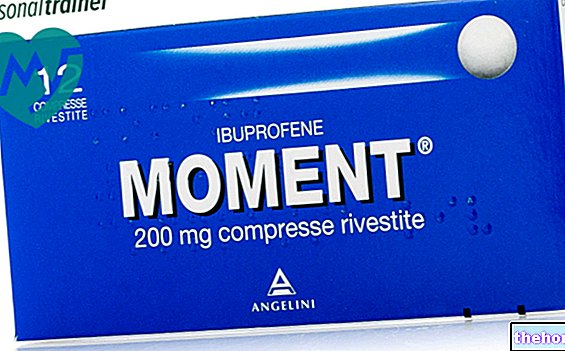Active ingredients: Bimatoprost, Timolol
GANFORT 0.3 mg / ml + 5 mg / ml eye drops, solution
Ganfort package inserts are available for pack sizes:- GANFORT 0.3 mg / ml + 5 mg / ml eye drops, solution
- GANFORT 0.3 mg / ml + 5 mg / ml eye drops, solution, in single-dose container
Indications Why is Ganfort used? What is it for?
GANFORT contains two different active ingredients (bimatoprost and timolol); both reduce the pressure inside the eye. Bimatoprost belongs to a group of medicines called prostamides, which are analogues of prostaglandin. Timolol belongs to a group of medicines called beta-blockers.
The eye contains a clear, water-based liquid that nourishes it internally. This liquid is constantly eliminated from the eye and new liquid is produced to replace the eliminated one. If the fluid is cleared too slowly, the pressure inside the eye increases and over time can damage vision (a disease called glaucoma).
GANFORT works by reducing the formation of liquid and also by increasing the amount of liquid that is eliminated. Doing so reduces the pressure inside the eye.
GANFORT eye drops are used to treat high eye pressure in adults, including the elderly. Such high pressure can lead to glaucoma. Your doctor will prescribe GANFORT if other eye drops containing beta-blockers or prostaglandin analogues have not worked effectively.
Contraindications When Ganfort should not be used
Do not use GANFORT eye drops, solution
- if you are allergic to bimatoprost, timolol, beta blockers or any of the other ingredients of GANFORT (listed in section 6)
- if you suffer or have suffered in the past from breathing problems such as asthma, severe chronic obstructive bronchitis (severe lung disease which can cause breathlessness, difficulty in breathing and / or persistent cough)
- if you have heart problems, such as low heart rate, heart block or heart failure
Precautions for use What you need to know before taking Ganfort
Before using this medicine tell your doctor if you have, or have ever had
- heart disease produced by coronary artery problems (symptoms may include chest pain or tightness, shortness of breath or choking), heart failure, low blood pressure
- heart rate disturbances such as slow heart rate
- breathing problems, asthma or chronic obstructive pulmonary disease
- conditions due to poor blood circulation (such as Raynaud's disease or Raynaud's syndrome)
- excessive activity of the thyroid gland as timolol may mask the signs and symptoms of thyroid disease
- diabetes as timolol may mask the signs and symptoms of too low blood sugar
- severe allergic reactions
- liver or kidney problems
- eye surface problems
- separation of one of the layers within the eyeball after surgery to reduce intra-ocular pressure
- known risk factors for macular edema (swelling of the retina inside the eye which leads to worsening of vision), for example cataract surgery
Before surgical anesthesia, tell your doctor that you are using GANFORT as timolol may alter the effects of some medicines used during anesthesia.
GANFORT can cause eyelashes to darken and lengthen, and can also darken the skin around the eyelid. Over time, the color of the iris may also darken. These changes can be permanent and are most noticeable if only one eye is being treated. GANFORT can cause hair growth if it comes into contact with the skin surface.
Children and adolescents
GANFORT should not be used in children and adolescents under 18 years of age.
Interactions Which drugs or foods can modify the effect of Ganfort
GANFORT can affect or be affected by other medicines you are taking, including other eye drops for the treatment of glaucoma. Tell your doctor or pharmacist if you are taking, have recently taken or might take any other medicines. Tell your doctor if you are using or intend to use medicines to lower blood pressure, heart medicines, medicines to treat diabetes, quinidine (used to treat heart disease and some types of malaria) or medicines to treat depression known as fluoxetine and paroxetine.
Warnings It is important to know that:
Pregnancy and breastfeeding
If you are pregnant or breast-feeding, think you may be pregnant or are planning to have a baby, ask your doctor or pharmacist for advice before taking this medicine. Do not use GANFORT if you are pregnant unless your doctor tells you to do so.
Do not use GANFORT if you are breastfeeding. Timolol can be excreted in breast milk. Talk to your doctor before taking any medicines while breastfeeding.
Driving and using machines
In some patients GANFORT can induce blurred vision. Do not drive or use machines until the symptoms have disappeared.
GANFORT contains benzalkonium chloride
GANFORT contains a preservative called benzalkonium chloride. Benzalkonium chloride can irritate the eyes and dull soft contact lenses. Do not use the drops while wearing contact lenses. After using the drops, wait at least 15 minutes before re-applying the lenses.
Dose, Method and Time of Administration How to use Ganfort: Posology
Always use GANFORT exactly as your doctor or pharmacist has told you. If in doubt, consult your doctor or pharmacist. The usual dose is one drop a day in the morning or evening in each eye that needs treatment. Take your dose at the same time each day.
Instructions for Use
Do not use the bottle if the guarantee seal on the cap is not intact before use.
- Wash your hands. You put your head back and look up.
- Slowly pull the lower lid down to form a small pocket.
- Turn the bottle upside down and apply gentle pressure to release one drop of eye drops for each eye to be treated.
- Let go of the lower lid and close your eye.
- Keeping the eye closed, press a finger against the corner of the closed eye (where the eye meets the nose) and hold for 2 minutes. This will help prevent GANFORT from penetrating the rest of the body.
If the drop does not enter the eye, repeat the operation.
To avoid contamination, the tip of the bottle must not touch the eye or come into contact with other surfaces. After using the bottle, close it tightly by screwing the cap back on.
If you use GANFORT at the same time as other eye medicines, leave at least 5 minutes between applying GANFORT and the other medicine. Eye ointments or gels should be used last.
If you forget to use GANFORT
If you forget to use GANFORT, as soon as you remember, just put in one drop and then go back to your normal dosing times. Do not use a double dose to make up for a forgotten dose.
If you stop taking GANFORT
For it to work properly, GANFORT must be used every day. If you have any further questions on the use of this medicine, ask your doctor, pharmacist or nurse.
Overdose What to do if you have taken too much Ganfort
If you have instilled more GANFORT than you should, this is unlikely to cause serious consequences. Give your next dose at the usual time. If this worries you, consult your doctor or pharmacist.
Side Effects What are the side effects of Ganfort
Like all medicines, GANFORT can cause side effects, although not everybody gets them. You can continue taking the drops as normal, as long as the effects are not serious. If this worries you, consult your doctor or pharmacist. Do not stop using GANFORT without talking to your doctor.
The following side effects can occur with GANFORT:
Very common side effects (may affect more than 1 in 10 people)
- At the level of the eye: redness.
Common side effects (may affect 1 to 9 in 100 people)
- At the eye level: burning, itching, stinging, sensitivity to light, pain in the eye, sticky eyes, dry eyes, foreign body sensation in the eye, small ulcers on the surface of the eye, with or without inflammation, difficulty seeing clearly, red and itchy eyelids, darkening of the eyelids, darkening of the color of the skin around the eyes, headache, eyelash lengthening, eye irritation, watery eyes, swollen eyelids, impaired vision.
- At the level of other parts of the body: runny nose, hair growth around the eyes, dizziness.
Uncommon side effects (may affect 1 to 9 in 1,000 people)
- At the level of the eye: inflammation of the iris, swelling of the conjunctiva (transparent layer of the eye), sore eyelids, tired eyes, eyelashes that grow inside, darkening of the color of the iris, sunken eyes, removal of the eyelid from the surface of the eye.
- At the level of other parts of the body: shortness of breath.
Undesirable effects with frequency not known
- At the level of the eye: cystoid macular edema (swelling of the retina inside the eye which leads to worsening of vision), eye swelling, blurred vision.
- Other parts of the body: difficulty in breathing / wheezing, symptoms of allergic reaction (swelling, red eye and skin rash), taste changes, slow heart rate, sleep disturbances, nightmare, asthma, hair loss , tiredness.
Additional side effects have been observed in patients using bimatoprost-containing eye drops and are therefore likely to also occur with GANFORT:
- Darkening of the eyelashes, darkening of the iris, frequent blinking, retroocular bleeding (retinal bleeding), inflammation inside the eye
- High blood pressure
- Weakness
- An increase in the levels of some blood tests that indicate that the liver is working
Additional side effects have been seen in patients taking eye drops containing timolol and are therefore likely to also occur with GANFORT. Like other topical ophthalmic medicines, timolol is absorbed and passes into the blood. This may cause undesirable effects similar to those seen with 'intravenous' and / or 'oral' beta-blockers. The possibility of side effects after administration of eye drops is less than that after administration of medicines by mouth or by injection. Among the undesirable effects listed are reactions included in the class of beta-blockers used to treat eye diseases:
- Severe allergic reactions with swelling and breathing difficulties which could be life-threatening
- Low blood sugar levels
- Depression; memory loss
- Fainting stroke; reduced blood flow to the brain; worsening of myasthenia gravis (increased muscle weakness); tingling sensation
- Reduced sensitivity of the eye surface; double vision; drooping of the eyelid, separation of one of the layers within the eyeball after pressure-reducing surgery in the eye; inflammation of the eye surface
- Heart failure; irregular or stopped heartbeat; slow or rapid heartbeats; accumulation of fluids, mainly water, in the body; chest pain
- Low blood pressure swollen or cold hands, feet and extremities due to constriction of blood vessels
- Cough
- Diarrhea; stomach ache; nausea and vomit; indigestion; dry mouth
- Red, scaly skin patches skin rash
- Muscular pain
- Reduced sexual desire; sexual dysfunction
Other side effects reported with phosphate-containing eye drops In very rare cases, some patients with severe damage to the clear layer of the front of the eye (the cornea) have developed opaque areas on the cornea due to calcium build-up during treatment.
Reporting of side effects
If you get any side effects, talk to your doctor, pharmacist or nurse. This includes any possible side effects not listed in this leaflet. You can also report side effects directly via the national reporting system listed in Appendix V *. By reporting side effects you can help provide more information on the safety of this medicine.
Expiry and Retention
Keep this medicine out of the sight and reach of children.
Do not use GANFORT after the expiry date which is stated on the bottle label after EXP. The expiry date refers to the last day of the month.
This medicine does not require any special storage conditions.
Once opened, solutions can become contaminated, which can lead to eye infections. For this reason, even if you have not used all the solution, you should throw away the bottle 4 weeks after first opening. In order not to forget, write the date of opening in the space provided on the box.
Do not throw any medicines via wastewater or household waste. Ask your pharmacist how to throw away medicines you no longer use. This will help protect the environment.
Other information
What GANFORT contains
- The active ingredients are: bimatoprost 0.3 mg / ml and timolol 5 mg / ml, corresponding to 6.8 mg / ml of timolol maleate.
- The other ingredients are: benzalkonium chloride (a preservative), sodium chloride, dibasic sodium phosphate heptahydrate, citric acid monohydrate and purified water. Small amounts of hydrochloric acid or sodium hydroxide may have been added to bring the solution to the right pH (acidity) level.
Description of how GANFORT looks and contents of the pack
GANFORT is a colorless or slightly yellow, clear eye drop solution in a plastic bottle.
Each pack contains 1 or 3 plastic bottles with screw cap.
Each bottle is approximately half full and contains 3 ml of solution, sufficient for 4 weeks.
Not all pack sizes may be marketed.
Source Package Leaflet: AIFA (Italian Medicines Agency). Content published in January 2016. The information present may not be up-to-date.
To have access to the most up-to-date version, it is advisable to access the AIFA (Italian Medicines Agency) website. Disclaimer and useful information.
01.0 NAME OF THE MEDICINAL PRODUCT
GANFORT 0.3 MG / ML + 5 MG / ML EYE DROPS, SOLUTION
02.0 QUALITATIVE AND QUANTITATIVE COMPOSITION
One ml of solution contains 0.3 mg of bimatoprost and 5 mg of timolol (as 6.8 mg of timolol maleate).
Excipients
Each ml of solution contains 0.05 mg of benzalkonium chloride.
For the full list of excipients, see section 6.1.
03.0 PHARMACEUTICAL FORM
Eye drops, solution.
Colorless to slightly yellow solution.
04.0 CLINICAL INFORMATION
04.1 Therapeutic indications
Reduction of intraocular pressure (IOP) in adult patients with open angle glaucoma or ocular hypertension who do not respond adequately to beta-blockers or topical prostaglandin analogues.
04.2 Posology and method of administration
Dosage
Recommended dosage in adults (including the elderly)
The recommended dose is one drop of GANFORT in the affected eye (s), once a day, given in the morning or evening. It should be given at the same time each day.
Literature data available on GANFORT suggest that evening dosing may be more effective than morning dosing in reducing IOP. However, patient compliance should be considered when deciding for morning or evening dosing (see section 5.1).
If a dose is missed, treatment should be continued with the next dose according to the schedule. The dosage should not exceed that of one drop per day in the affected eye (s).
Renal and hepatic insufficiency
GANFORT has not been studied in patients with hepatic or renal insufficiency, therefore caution should be exercised when treating patients with these conditions.
Pediatric population
The safety and efficacy of GANFORT in children aged 0-18 years have not been established. There are no data available.
Method of administration
If more than one topical ophthalmic medicinal product is required, instill each medicinal product with an interval of at least 5 minutes between each other.
When using a nasolacrimal occlusion or closing the eyelids for 2 minutes, systemic absorption is reduced. This could lead to a reduction in systemic side effects and an increase in local activity.
04.3 Contraindications
• Hypersensitivity to the active substances or to any of the excipients listed in section 6.1.
• Reactive airway disorders, including current or previous bronchial asthma and severe chronic obstructive pulmonary disease.
• Sinus bradycardia, sick sinus syndrome, sino-atrial block, second or third degree atrioventricular block, not controlled by a pacemaker. Manifest heart failure, cardiogenic shock.
04.4 Special warnings and appropriate precautions for use
Like other topically applied ophthalmic medicinal products, the active substances (timolol / bimatoprost) present in GANFORT can be absorbed systemically. No increase in systemic absorption of the individual active substances was observed. Due to the beta-adrenergic component, timolol, the same type of cardiovascular, pulmonary and other adverse reactions as those occurring with beta- systemic blockers. The incidence of systemic adverse reactions after administration of topical ophthalmic medicinal products is lower than that of reactions following systemic administration. To reduce systemic absorption, see section 4.2.
Cardiac disorders
Patients with cardiovascular disease (e.g. coronary artery disease, Prinzmetal's angina and heart failure) and on hypotensive therapy with beta-blockers should be critically evaluated and therapy with other active substances should be considered.Patients with cardiovascular disease should be monitored for signs of disease worsening and adverse events.
Due to their negative effect on conduction time, beta-blockers should be administered with caution to patients with first degree heart block.
Vascular pathologies
Patients with severe peripheral circulatory disturbance / disorders (i.e. advanced forms of Raynaud's phenomenon or Raynaud's syndrome) should be treated with caution.
Respiratory pathologies
Respiratory reactions, including death from bronchospasm in patients with asthma, have been reported following administration of some ophthalmic beta-blockers.
GANFORT should be used with caution, in patients with mild / moderate chronic obstructive pulmonary disease (COPD) and only if the potential benefit outweighs the potential risk.
Hypoglycemia / diabetes
Medicinal products that induce beta-adrenergic blockade should be administered with caution in patients subject to spontaneous hypoglycaemia or in patients with unstable diabetes), since beta-blockers may mask the signs and symptoms of acute hypoglycaemia.
Beta blockers can also mask the signs of hyperthyroidism.
Corneal pathologies
? -Ophthalmic blockers could induce dry eyes. Patients with corneal disease should be treated with caution.
Other beta-blocking agents
The effect on intraocular pressure or known systemic effects of beta-blockers may be potentiated when timolol is administered to patients already being treated with a systemic beta-blocker. The response of these patients should be closely monitored. The use of two Topical beta-adrenergic blocking agents is not recommended (see section 4.5).
Anaphylactic reactions
During treatment with beta-blockers, patients with a history of atopy or severe anaphylactic reactions caused by allergens of various kinds, may be more responsive to repeated stimulation with these allergens and not respond to the dose of adrenaline usually used for treatment. of anaphylactic reactions.
Detachment of the choroid
Choroid detachment has been reported with the administration of aqueous production inhibiting therapies (eg timolol, acetazolamide) after filtration procedures.
Surgical anesthesia
Ophthalmic preparations based on? -Blockers can block the systemic effects of? -Agonists, for example adrenaline. The anesthetist should be informed if the patient is taking timolol.
Liverworts
In patients with a history of mild liver disease or with abnormal initial levels of alanine aminotransferase (ALT), aspartate aminotransferase (AST) and / or bilirubin, bimatoprost caused no adverse reactions related to liver function for more than 24 months. There are no known adverse reactions of ophthalmic timolol on liver function.
Eyepieces
Before starting treatment, patients should be informed of the possibility of eyelash lengthening, darkening of the eyelids or periocular skin and increased brown pigmentation of the iris as these reactions have been observed during treatment with bimatoprost and with GANFORT. L " Increased iris pigmentation could be permanent and could cause differences in appearance between the two eyes when only one eye is treated. After discontinuation of GANFORT the iris pigmentation can be permanent. After 12 months of treatment with GANFORT, the incidence of iris pigmentation was 0.2%. After 12 months of treatment with eye drops containing only bimatoprost, the incidence was 1.5% and did not increase after 3 years of treatment. The change in pigmentation depends on the increase in the melanin content in the melanocytes rather than on the increase in the number of melanocytes. long term effects of major iris pigmentation are unknown. Iris color changes seen with bimatoprost ophthalmic administration may not be observable for several months or years. Neither the nevi nor the iris spots seem to be affected by the treatment. Reversibility of periorbital tissue pigmentation has been reported for some patients.
Cases of macular edema, including cystoid macular edema, have been reported with GANFORT. GANFORT should therefore be used with caution in aphakic patients, in pseudoaphakic patients with rupture of the posterior lens capsule or in patients with known risk factors for macular edema (eg, intraocular surgery, retinal vein occlusions, inflammatory ocular disease and diabetic retinopathy).
GANFORT should be used with caution in patients with active intraocular inflammation (eg uveitis) as the inflammation may be exacerbated.
Skin
There is a possibility of hair growth in areas of the skin that repeatedly come into contact with GANFORT. Therefore it is important to apply GANFORT according to the instructions and to avoid running on the cheek or other skin areas.
Excipients
The preservative in GANFORT, benzalkonium chloride, can irritate the eyes. Contact lenses must be removed prior to fitting and waiting at least 15 minutes before the next fitting. Benzalkonium chloride is known to opacify soft contact lenses, so contact with lenses should be avoided.
Benzalkonium chloride has been reported to cause punctate keratopathy and / or toxic ulcerative keratopathy. Clinical monitoring is therefore necessary in patients with dry eye or with compromised cornea who use GANFORT frequently or for a long time.
Other pathologies
GANFORT has not been studied in patients with inflammatory eye disease, neovascular, inflammatory, angle-closure glaucoma, congenital or narrow-angle glaucoma.
In studies involving the administration of bimatoprost 0.3 mg / l in patients with glaucoma or ocular hypertension, it was shown that more frequent exposure of the eye to more than 1 daily dose of bimatoprost could lower the IOP lowering effect. . Patients using GANFORT with other prostaglandin analogues should be monitored for changes in intraocular pressure.
04.5 Interactions with other medicinal products and other forms of interaction
No specific interaction studies have been performed with the fixed combination of bimatoprost / timolol.
The potential for additive effects, such as hypotension and / or marked bradycardia, exists when the ophthalmic beta-blocker solution is administered concomitantly with oral calcium channel blockers, guanethidine, beta-adrenergic blocking agents, parasympathomimetics, antiarrhythmics (including amiodarone ) and digitalis glycosides.
Enhancement of systemic beta-blockade (eg decreased heart rate, depression) was observed during combined treatment with CYP2D6 inhibitors (eg quinidine, fluoxetine, paroxetine) and timolol.
Occasionally, mydriasis resulting from concomitant use of ophthalmic beta-blockers and adrenaline (epinephrine) has been reported.
04.6 Pregnancy and breastfeeding
Pregnancy
There are no adequate data on the use of the fixed combination of bimatoprost / timolol in pregnant women. GANFORT should not be used during pregnancy unless clearly necessary. To reduce systemic absorption, see section 4.2.
Bimatoprost
No clinical data on exposed pregnancies are available. Animal studies have shown reproductive toxicity at high maternally toxic doses (see section 5.3).
Timolol
Epidemiological studies have not revealed malformative effects, but have shown a risk of intrauterine growth retardation during administration of oral beta-blockers.
In addition, signs and symptoms of beta-blockade (e.g. bradycardia, hypotension, respiratory distress, and hypoglycemia) were observed in the newborn when beta-blockers were administered to the mother until delivery. If GANFORT is administered until delivery, the neonate should be monitored closely during the first days of life. Studies in animals treated with timolol have shown reproductive toxicity at significantly higher doses than those used in clinical practice (see section 5.3).
Feeding time
Timolol
Beta-blockers are excreted in human milk. However, at therapeutic doses of timolol in eye drops, it is unlikely that sufficient quantities are present in breast milk to produce clinical symptoms of beta-blocking action in the neonate. To reduce systemic absorption, see section 4.2.
Bimatoprost
It is not known whether bimatoprost is excreted in human milk, but it is excreted in the milk of rats. GANFORT should therefore not be used in women who are breastfeeding.
Fertility
There are no data on the effects of GANFORT on human fertility.
04.7 Effects on ability to drive and use machines
GANFORT has negligible influence on the ability to drive or use machines.
As with other treatments for ophthalmic use, if transient blurring of vision occurs upon application of the drops, the patient should wait until the vision clears before driving or operating machinery.
04.8 Undesirable effects
GANFORT
Summary of the safety profile
Adverse reactions reported in clinical trials using GANFORT were limited to those previously reported for the individual active substances bimatoprost and timolol. No new adverse reactions specific to GANFORT were observed during clinical studies.
Most adverse reactions reported in clinical trials using GANFORT involved the eyes, were mild and none were severe. Based on 12-month clinical data, the most commonly reported adverse reaction was conjunctival hyperaemia (predominantly trace to mild and believed to be non-inflammatory in nature) in approximately 26% of patients and led to discontinuation of treatment in patients. 1.5% of patients.
Table of adverse reactions
The following adverse reactions have been reported with GANFORT (within each frequency class, adverse reactions are listed in order of decreasing severity).
The frequency of possible adverse reactions listed below is defined using the following convention:
Other adverse reactions that have been observed with one of the active substances (bimatoprost or timolol) and could therefore also occur with GANFORT are listed below:
Bimatoprost
Timolol
Like other topically applied ophthalmic medicinal products, GANFORT (bimatoprost / timolol) is absorbed into the systemic circulation. Absorption of timolol may cause undesirable effects similar to those seen with systemic beta-blockers. The incidence of systemic adverse reactions after administration of topical ophthalmic medicinal products is lower than that of reactions following systemic administration. To reduce systemic absorption, see section 4.2. Other adverse reactions observed with ophthalmic beta-blockers and which may possibly also occur with GANFORT are listed below:
Adverse reactions reported with phosphate-containing eye drops
Cases of corneal calcification associated with the use of phosphate-containing eye drops have been reported very rarely in patients with severe corneal impairment.
Reporting of suspected adverse reactions
Reporting of suspected adverse reactions occurring after authorization of the medicinal product is important as it allows continuous monitoring of the benefit / risk balance of the medicinal product. Healthcare professionals are asked to report any suspected adverse reactions via the national reporting system. in "Annex V *.
04.9 Overdose
A topical overdose with GANFORT is unlikely to occur or is associated with toxicity.
Bimatoprost
In the event that GANFORT is accidentally ingested, it may be useful to know that: In two-week studies in rats and mice, oral administration of bimatoprost doses up to 100 mg / kg per day was found not to result in no toxicity. This dose expressed in mg / m2 is at least 70 times higher than the dose contained in a bottle of GANFORT accidentally administered to a 10 kg child.
Timolol
Symptoms of systemic timolol overdose include: bradycardia, hypotension, bronchospasm, headache, dizziness, shortness of breath and cardiac arrest. A study in some patients with renal insufficiency showed that timolol is not rapidly dialyzed.
In the event of an overdose, symptomatic and supportive treatment is required.
05.0 PHARMACOLOGICAL PROPERTIES
05.1 Pharmacodynamic properties
Pharmacotherapeutic group: ophthalmologicals - beta-blocking substances.
ATC code: S01ED51.
Mechanism of action
GANFORT consists of two active ingredients: bimatoprost and timolol. These two components reduce elevated intraocular pressure (IOP) thanks to complementary mechanisms of action and the combined effect results in a more marked reduction in IOP than is obtained by administering one or the other of the components individually. GANFORT acts rapidly. .
Bimatoprost is a potent ocular hypotensive active substance. Is it a synthetic prostamide, structurally related to prostaglandin F2? (PGF2?), But which does not act through any known prostaglandin receptor. Bimatoprost selectively mimics the effects of recently discovered biosynthetic substances called prostamides. The prostamidal receptor, however, has not yet been structurally identified. The mechanism of action by which bimatoprost reduces intraocular pressure in humans is the increase in the outflow of both trabecular and uveo-scleral aqueous humor.
Timolol non-selectively blocks beta1 and beta2 adrenergic receptors, lacking significant intrinsic sympathomimetic activity, direct myocardial sedative activity, or local anesthetic activity (membrane stabilizer). Timolol lowers IOP by reducing the production of aqueous humor. The exact mechanism of action has not been clearly established, but excessive synthesis of cyclic AMP induced by endogenous beta-adrenergic stimulation is likely to be inhibited.
Clinical Effects
The reduction in IOP produced by GANFORT is not less than that obtained with the non-fixed combination therapy of bimatoprost (once daily) and timolol (twice daily).
Literature data available on GANFORT suggest that evening dosing may be more effective than morning dosing in reducing IOP. However, patient compliance should be considered when deciding for morning or evening dosing.
Pediatric population
The safety and efficacy of GANFORT in children aged 0 to 18 years have not been established.
05.2 Pharmacokinetic properties
The drug GANFORT
Determination of bimatoprost and timolol plasma concentrations was performed in a crossover study in healthy subjects comparing monotherapies and GANFORT.
The systemic absorption of each component was minimal and not affected by co-administration in a single formulation.
In two 12-month studies, in which systemic absorption was evaluated, no accumulation of either component was observed.
Bimatoprost
In vitro bimatoprost penetrates well into the human cornea and sclera. After ocular administration, the systemic exposure to bimatoprost is very low, with no accumulation phenomena over time. After daily administration of one drop of 0.03% bimatoprost in both eyes, for a period of two weeks, the blood concentration reached peak within 10 minutes after instillation and fell below the lower limit of detection (0.025 ng / mL) within 1.5 hours after administration. Mean Cmax and AUC0-24 values were similar on day 7 and day 14, and were approximately 0.08 ng / mL and 0.09 ng • h / mL, respectively, indicating that a constant concentration had been achieved of drug during the first week of ophthalmic administration.
Bimatoprost is moderately distributed to body tissues and the systemic volume of distribution in humans at steady-state was 0.67 l / kg. In human blood, bimatoprost is mainly found in plasma. The plasma protein binding of bimatoprost is of about 88%.
After ophthalmic administration, bimatoprost is the major circulating component in the blood, once systemic circulation is reached. Bimatoprost, then subjected to oxidation, N-deethylation and glucuronidation, forms various metabolites.
Bimatoprost is mainly eliminated by renal excretion. Up to 67% of an intravenous dose administered to healthy volunteers was excreted via the urine, 25% of the dose via the faeces. The elimination half-life, determined after intravenous administration, was approximately 45 minutes; the total blood clearance was 1.5 L / h / kg.
Characteristics in elderly patients
After two daily administrations, the mean AUC0-24 value of 0.0634 ng & bullh; / ml of bimatoprost in elderly patients (subjects aged 65 years or over) was significantly higher than the value of 0.0218 ng • h / ml found in healthy young subjects. However, this result is not important from a clinical point of view as the systemic exposure in both elderly and young subjects remained very low with ocular administration. There was no accumulation of bimatoprost in the blood over time, while the safety profile was similar in both elderly and young patients.
Timolol
After ocular administration of 0.5% eye drops in subjects undergoing cataract surgery, there was a peak concentration of timolol in the aqueous humor of 898 ng / ml after 1 hour after administration. absorbed systemically and then metabolised primarily in the liver. The plasma half-life of timolol is approximately 4-6 hours. Timolol is partly metabolised by the liver and excreted, as such and as metabolites, by the kidney. Timolol does not bind significantly to plasma proteins.
05.3 Preclinical safety data
The drug GANFORT
Toxicity studies following repeated administration of GANFORT revealed no special risk for humans. The ocular and systemic safety profile of the individual components was clearly defined.
Bimatoprost
Non-clinical data reveal no special hazard for humans based on conventional studies of safety pharmacology, genotoxicity, carcinogenic potential.
Studies in rodents have caused species-specific abortion at exposure levels 33 to 97 times those achieved in humans after ocular administration.
In monkeys, daily ocular administration of bimatoprost at concentrations ≥0.03% for one year caused increased iris pigmentation and dose-dependent reversible periocular effects, characterized by a prominent upper and / or lower sulcus and widening of the palpebral fissure. The increase in iris pigmentation seems to be due to an increased stimulation in the production of melanin in the melanocytes and not to the increase in the number of melanocytes. No functional or microscopic changes related to the periocular effects were observed, and the mechanism of action related to the periocular changes observed is unknown.
Timolol
Non-clinical data reveal no special hazard for humans based on conventional studies of safety pharmacology, repeated dose toxicity, genotoxicity, carcinogenic potential, reproductive toxicity.
06.0 PHARMACEUTICAL INFORMATION
06.1 Excipients
Benzalkonium chloride
Sodium chloride
Dibasic sodium phosphate heptahydrate
Citric acid monohydrate
Hydrochloric acid or sodium hydroxide (to correct the pH)
Purified water
06.2 Incompatibility
Not relevant.
06.3 Period of validity
2 years.
Chemical and physical in-use stability has been demonstrated for 28 days at 25 ° C.
From a microbiological point of view, in-use storage times and conditions are the responsibility of the user and would normally not exceed 28 days at 25 ° C.
06.4 Special precautions for storage
This medicine does not require any special storage conditions.
06.5 Nature of the immediate packaging and contents of the package
Milk white bottles in low density polyethylene with polystyrene screw cap. Each bottle has a filling volume of 3ml.
The following packs are available: box containing 1 or 3 bottles of 3 ml. Not all pack sizes may be marketed.
06.6 Instructions for use and handling
No special instructions.
07.0 MARKETING AUTHORIZATION HOLDER
Allergan Pharmaceuticals Ireland
Castlebar Road
Westport
Co. Mayo
Ireland
08.0 MARKETING AUTHORIZATION NUMBER
EU / 1/06/340 / 001-002
037140011
037140023
09.0 DATE OF FIRST AUTHORIZATION OR RENEWAL OF THE AUTHORIZATION
Date of first authorization 19 May 2006
Date of last renewal 23 June 2011




























